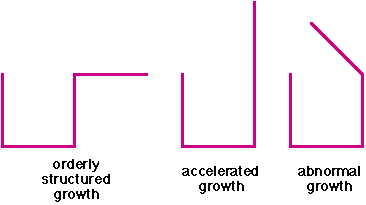Chaos
AbstractThe following discussions and activities are designed to lead the students to explore various incarnations of chaos. This lesson is best implemented with students working in teams of 2, alternating being the "driver" and the "recorder" using the computer activities. ObjectivesUpon completion of this lesson, students will:
Standards Addressed:Student Prerequisites
Teacher Preparation
Key Terms
Lesson Outline
Alternate OutlineThis lesson can be rearranged in several ways.
Suggested Follow-UpAfter these discussions and activities, the students will have seen more ways in which chaos, first introduced in the Fractals and the Chaos Game lesson, is used to model behavior. The next lesson, Pascal's Triangle , reintroduces Sierpinski-like Triangles, as seen in the Geometric Fractals and Fractals and the Chaos Game lessons, in yet another way, demonstrating the rich connections between seemingly different kinds of math. |

